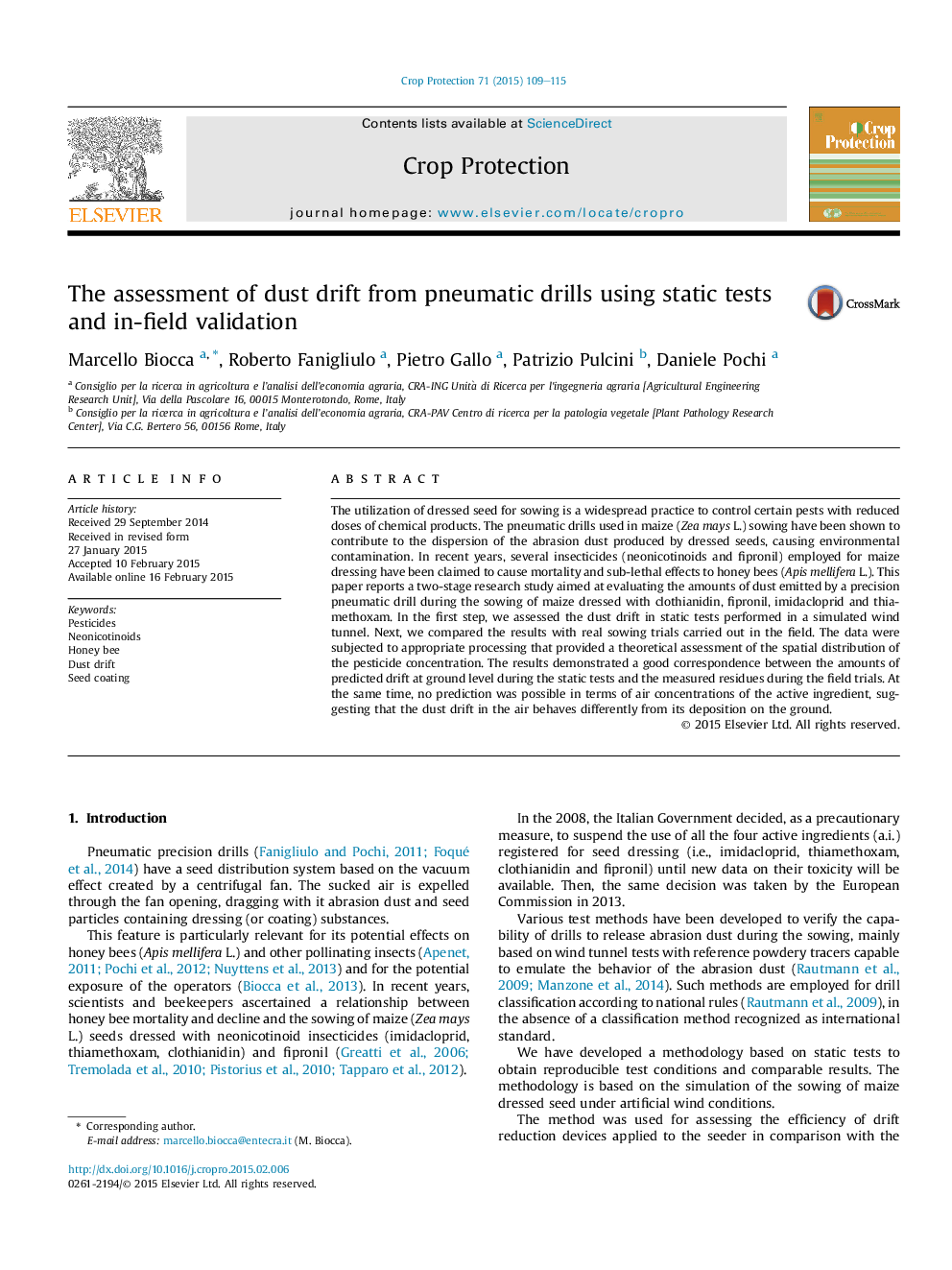| Article ID | Journal | Published Year | Pages | File Type |
|---|---|---|---|---|
| 4505720 | Crop Protection | 2015 | 7 Pages |
•In this study static and field tests to assess the active ingredients in the abrasion dust from dressed seed are reported.•A method to predict the theoretical dust drift in the field, starting from the results of the static test, is provided.•The amounts of predicted drift at ground level are significantly comparable to the measured residues during field trials.•A similar result was not achieved for the air concentrations of active ingredients.
The utilization of dressed seed for sowing is a widespread practice to control certain pests with reduced doses of chemical products. The pneumatic drills used in maize (Zea mays L.) sowing have been shown to contribute to the dispersion of the abrasion dust produced by dressed seeds, causing environmental contamination. In recent years, several insecticides (neonicotinoids and fipronil) employed for maize dressing have been claimed to cause mortality and sub-lethal effects to honey bees (Apis mellifera L.). This paper reports a two-stage research study aimed at evaluating the amounts of dust emitted by a precision pneumatic drill during the sowing of maize dressed with clothianidin, fipronil, imidacloprid and thiamethoxam. In the first step, we assessed the dust drift in static tests performed in a simulated wind tunnel. Next, we compared the results with real sowing trials carried out in the field. The data were subjected to appropriate processing that provided a theoretical assessment of the spatial distribution of the pesticide concentration. The results demonstrated a good correspondence between the amounts of predicted drift at ground level during the static tests and the measured residues during the field trials. At the same time, no prediction was possible in terms of air concentrations of the active ingredient, suggesting that the dust drift in the air behaves differently from its deposition on the ground.
